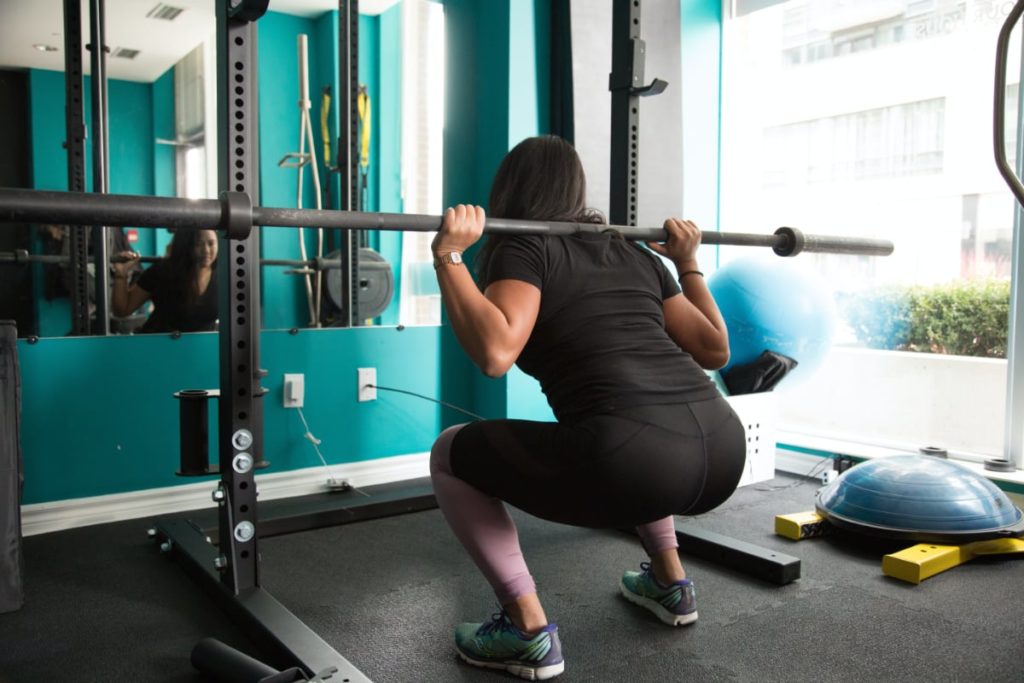
The squat and its variants are some of the most commonly prescribed exercises for rehabilitation, strengthening and athletic development. While optimal squatting mechanics will vary between populations, it is still a hot topic in current research. Today, I am going to answer a few of the main questions I get from clients and provide my evidence-based responses to them.
- How should I position my feet when I squat?
The stance that you take when you squat will alter leverages, mechanical advantages, and muscle activation and will vary based on individual differences. When using a narrow stance in either a back or front squat, the mechanical demand is distributed amongst the back extensors (erector spinae), glutes, quadriceps, and calf muscles. Conversely, a wider stance and lower bar position will increase the demand on the hip (gluteal muscles) and knee extensors (quadriceps) and decrease the demand on the back extensors and calf muscles (Chui, Burkhardt, 2011). Strengthening goals will depend on many factors such as occupation, sport, and rehabilitation objectives and must be considered when choosing the optimal squat for your needs.
- How deep should I squat?
Advice to not squat below 90 degrees has always been one of the most common cues used to prevent excessive compression and shearing forces within the knees. Newer research now shows that the greatest compression occurs at 90 degrees of knee flexion and not in deeper squat positions. Additionally, the quadriceps are most efficiently used in the ¼ or ½ squat ranges which means that greater loads and training weights are required to induce adequate stimuli in these positions in comparison to a deep squat (Hartman, Wirth, and Klusemann, 2013). Greater loads increase stress in the knee joint and compressive forces in the spine and require increased core stability to prevent injury.
- Can my knees go over my toes?
When looking at someone squat from the side, one of the things that you will notice is that the shins angle forwards (aka tibial advancement) during the descent phase. Restriction of tibial advancement has been taught for many years as it was thought to be better for the knee joint. Newer research now suggests that restricting tibial advancement creates significant mechanical changes in the hip and knee and causes a substantial increase in forward lean and hip flexion to stay balanced. An increase in forward lean is not recommended because it increased the risk of lower back strains and disc injuries (Hartmann, Wirth, and Klusemann, 2013). Preferably, you should squat in a manner that allows the knees to move to a position that allows coordination and timing between hip and knee movements (McKean, Dunn, and Burkett, 2010).
I hope that the above information has provided some starting points for improving your squatting mechanics both within the gym and the clinic. If you are interested in further evaluation of your squatting mechanics and specific needs, please book an assessment with one of our physiotherapists and we will gladly help you out.
